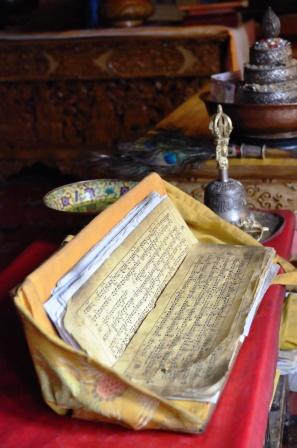Acharya Agnivesha – Legend, Works, Samhita
Article by Dr Manasa, BAMS
Agnivesha was an ancient Ayurveda teacher and an author of a famous treatise called by the name ‘Agnivesha Tantra’ which in the later period came to be popularly called by the name ‘Charaka Samhita’.
Table of Contents
Life
Agnivesha was the disciple of Acharya Punarvasu Atreya. Punarvasu Atreya himself was the disciple of Sage Bharadwaja.

Atreya had learnt Ayurveda, the science of life and the most ancient medical science from Sage Bharadwaja and had imparted the same to his disciple Agnivesha. The other students of Atreya and colleagues of Agnivesha were Bhela, Jatukarna, Parashara, Harita, Ksharapani and others. All these went on to become stalwarts of Ayurveda and had contributed towards Ayurveda in the form of documented science, which they had heard, learnt and practiced from their Gurus (teachers).
Best student – Agnivesha was considered to be the most intelligent disciple among the above mentioned 6 disciples of Punarvasu Atreya. He was also the first among the lot to have composed a treatise. It was named after him and called ‘Agnivesha Tantra’.
‘Agnivesha Tantra’ was also considered as the best among the treatises composed by the disciples of Punarvasu Atreya.
Names, references
Other names and references of Agnivesha
Below mentioned are the other names of Agnivesha –
- Vahnivesha
- Hutashavesha
- Hutasha
- Hutasa
- Vahni
All the above mentioned names are synonyms of ‘Agni’ i.e. fire
In Madhavanidana, 44th chapter which deals with fractures and their pathology (Bhagna Nidana), one can observe that Agnivesha was called by the name ‘Hutasa’
In Charaka Samhita, Siddhi Sthana, Chapter 12, verse 53, Agnivesha is referred by the name Vahnivesha
Acharya Chakrapanidatta, while starting the commentary on Charaka Samhita, in Mangalacharana (intro), refers to Agnivesha as Hutavesha
Dowson, in his classical mythology has quoted that Agnivesha was the son of ‘Agni, the God of fire’, hence the name. Sage Bharadwaja gave him the ‘Agneyastra – the weapon of fire’, which was in turn possessed by Dronacharya, the preceptor of Pandavas.
Time period
Time Period of Agnives
One can find that the name of Atreya being mentioned in ‘Aswadi Gana’ of Panini’s Sanskrit work on grammar named Ashtadhyayi. Panini’s date was fixed at 7th century BC. With this reference it can be inferred that Atreya and Agnivesha were quite renowned during that period, i.e. 7th century BC.
As Atreya’s teachings are mentioned in Charaka Samhita, which belongs to the period of Upanishads, it is said that Ayurveda is more attached to Atharvana Veda.
Thus, the time period of Agnivesha and Atreya may be fixed between the period of Atharva Veda (1500BC) and Panini’s period (7th BC) i.e. 1000BC i.e. in the age of Upanishads.
Works
Works of Master Agnivesh:
Agnivesha Tantra is the most popular work of Acharya Agnivesha. Below said are the works of Agnivesha –
- Agnivesha Tantra – present day Charaka Samhita
- Anjana Nidana – a treatise on the diseases of the eye
- Nidana Sthana – a book on pathology
- Ramayana Rahasya
- Ramayana Shatashloki
Among these, the first 3 are the works on Ayurveda.
Agnivesha Tantra –
Acharya Agnivesha composed Agnivesha tantra, a treatise comprising of compilation of Ayurveda and topics related to it.
Originally Agnivesha Tantra comprised of 12000 verses. Unfortunately the original work is not available at present.
In the later period, this treatise was redacted by Acharya Charaka. Thereafter Agnivesha Tantra became popular as Charaka Samhita and has been called by that name ever after.
In total 41 chapters (i.e. 17 chapters from Chikitsa Sthana, 12 chapters from Kalpa Sthana, 12 chapters from Siddhi Sthana) which were originally composed by Agnivesha and revised by Charaka, were lost.
Later on those works were redacted by Acharya Dridhabala.
Charaka Samhita is considered as one of the most important reference for learning and practicing Ayurveda. Whenever there is a mention of Ayurvedic treatises, the name of Charaka Samhita always stands tall and qualifies as the best reference.
Charaka Samhita adorns the first place in the list of the elite ‘Greater Trio’ or ‘Greater Trilogy’ of Ayurveda i.e. Brihat Trayees. The other two treatises which share the respect and status in this group are Sushruta Samhita (composed by Acharya Sushruta) and Ashtanga Samhita (Ashtanga Hridaya and Ashtanga Sangraha composed by Acharya Vagbhata).
Formulations
Formulations in the name of Agnivesha –
Some formulations can be seen in Gadanigraha in the name of Agnivesha. They are supposed to be formulated by him or named after him. They are –
- Changeri Ghritam
- Shatpala Ghritam
- Mahatiktaka Ghritam
- Vasadyam Ghritam
- Tiktaka Ghritam
- Trushanadyam Ghritam
Summing up –
Charaka Samhita is a great treatise and the ‘numero-uno’ reference for Ayurveda. But it is always the ‘brain child’ of Acharya Agnivesha. It is supposedly the first ‘methodically documented’ work on Ayurveda. He is undoubtedly the pioneer of Ayurveda. His work Agnivesha Tantra paved way and foundation for many future works on Ayurveda.









